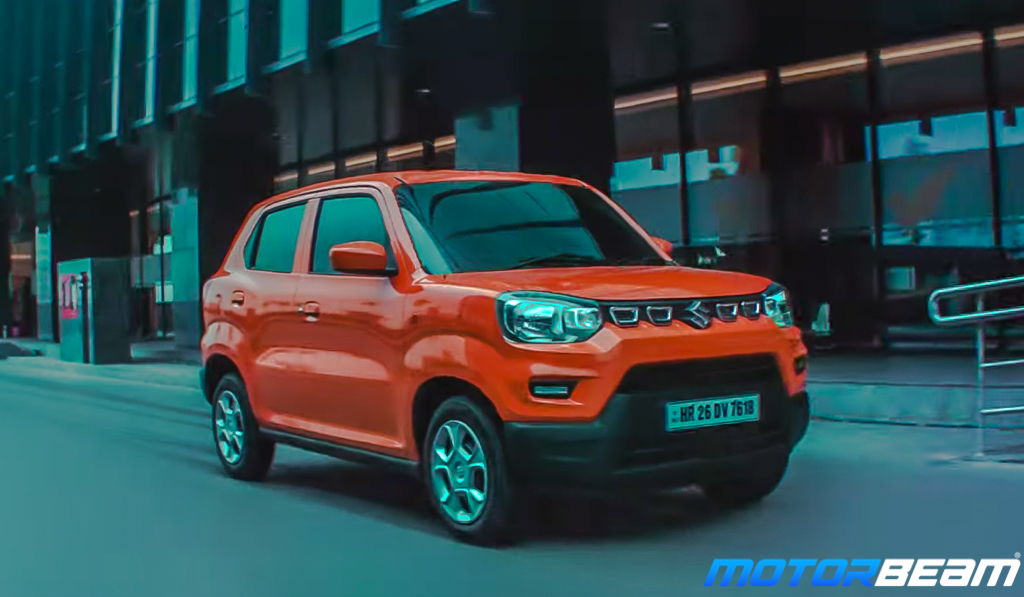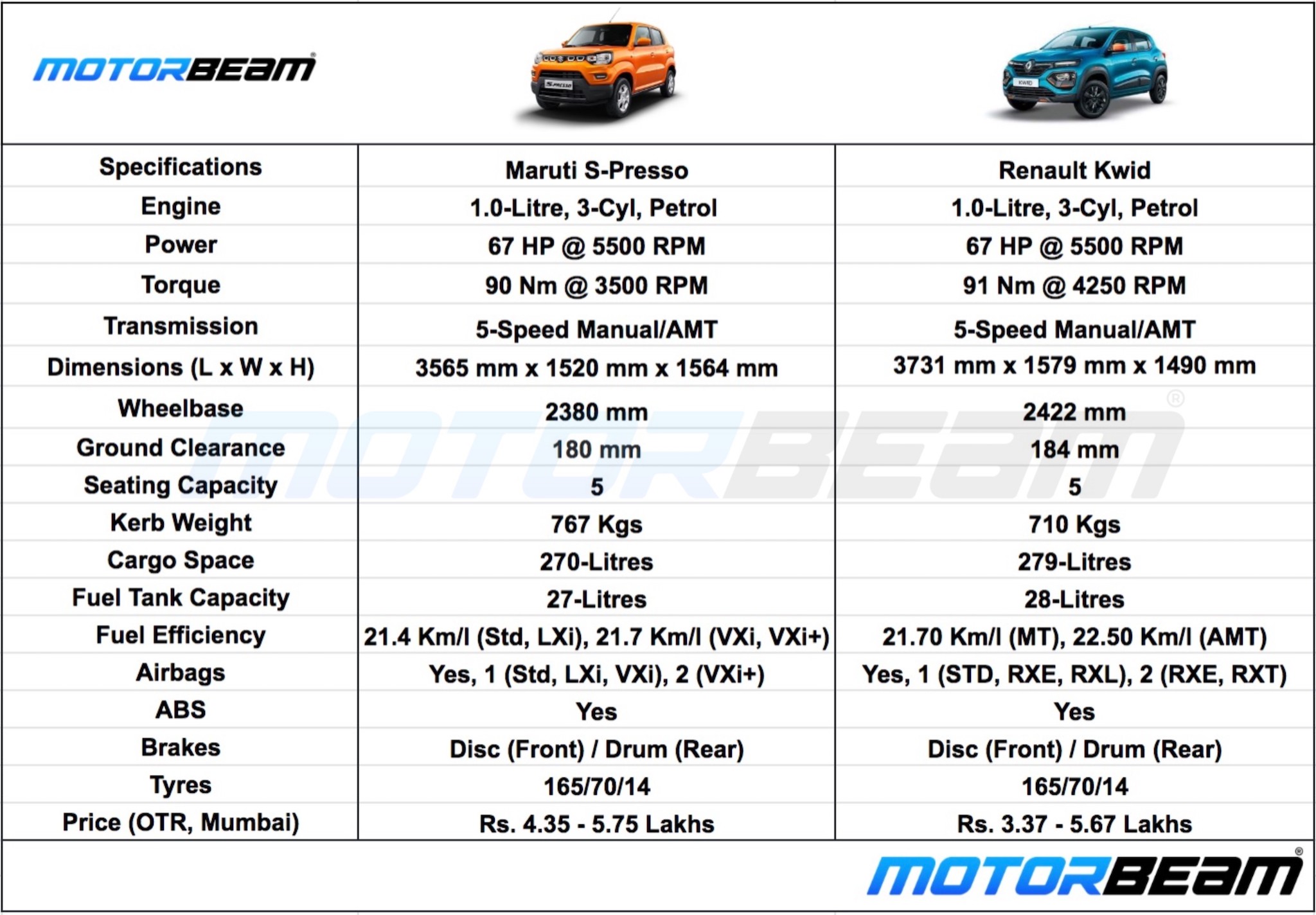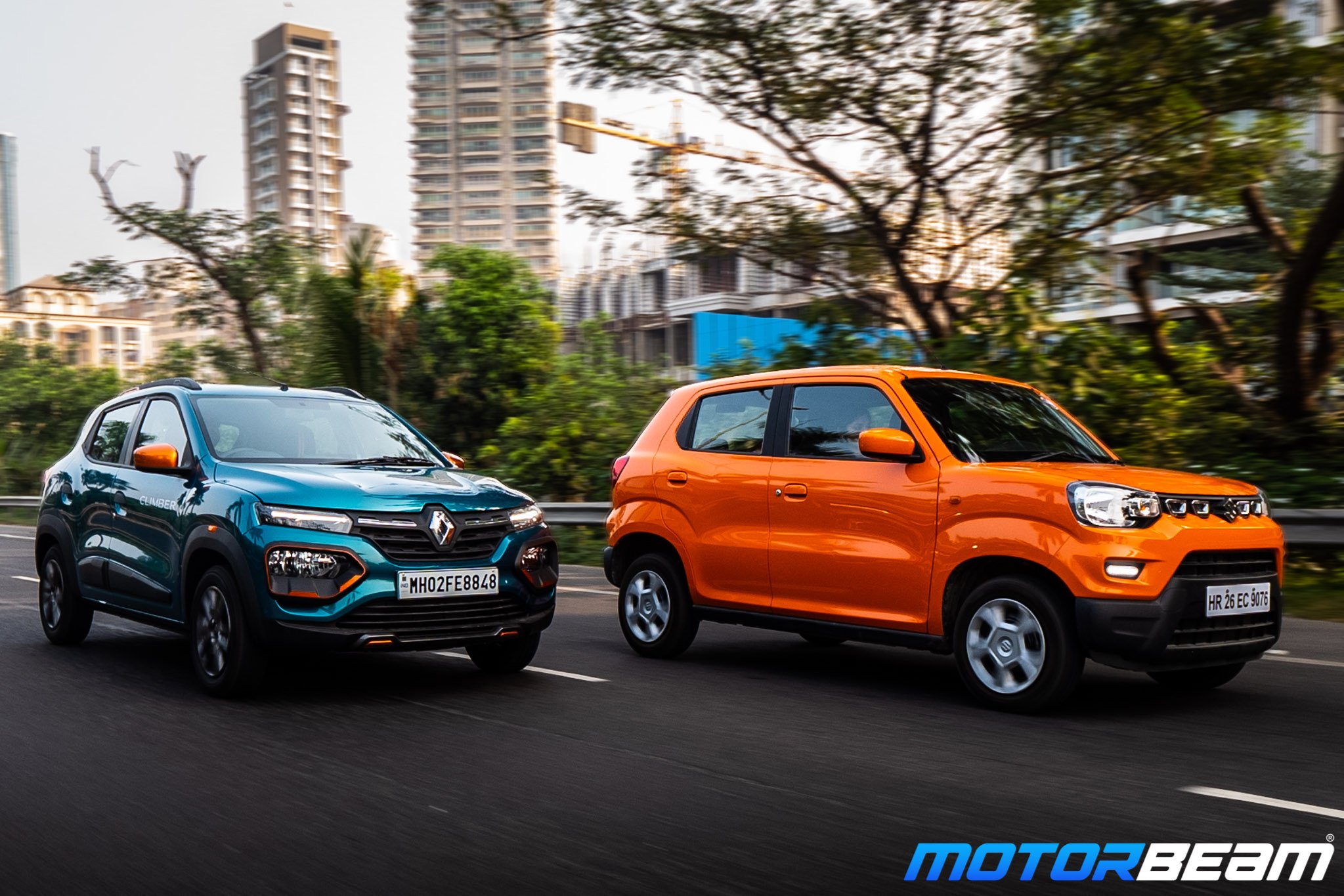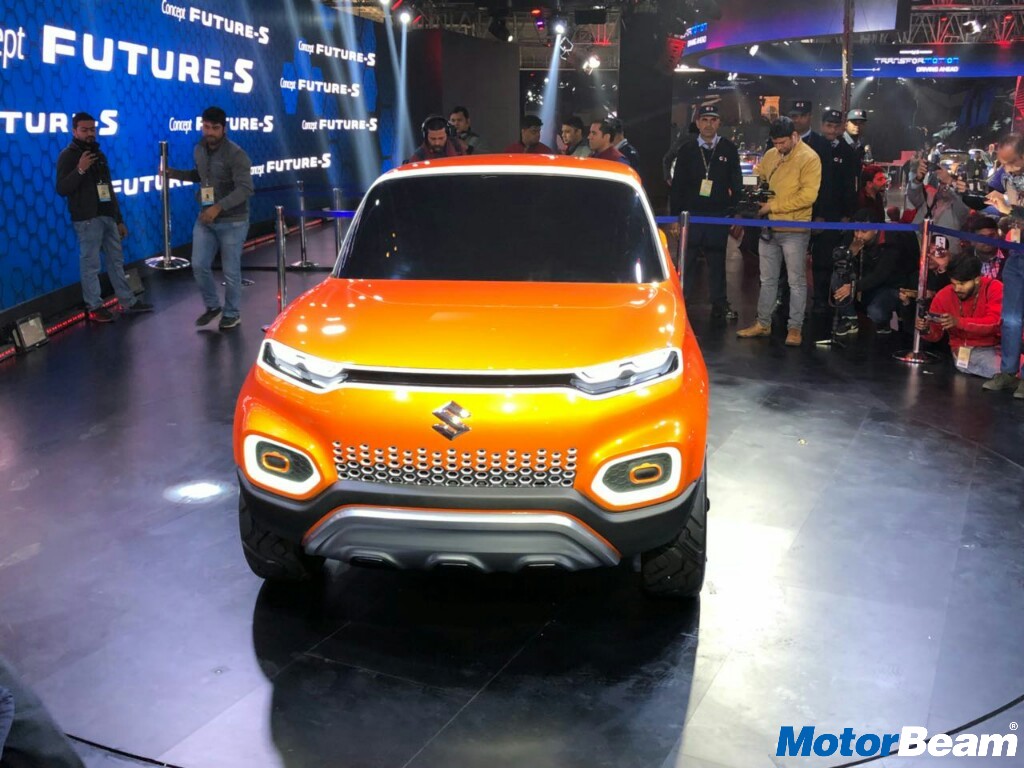We do a quick spec comparison of the Maruti S-Presso and Renault Kwid.
The Renault Kwid took everyone by surprise when it was unveiled at the 2014 Auto Expo in India. Upon production, it brought many features to the segment that were previously, only found in cars a segment or two higher. But since then, other manufacturers have caught up, making Renault feel the heat. The latest contender is Maruti Suzuki, with its funky S-Presso. Just after a day of the introduction of the S-Presso, Renault introduced their answer to it. Let us see how they compare!
Exterior
Renault Kwid
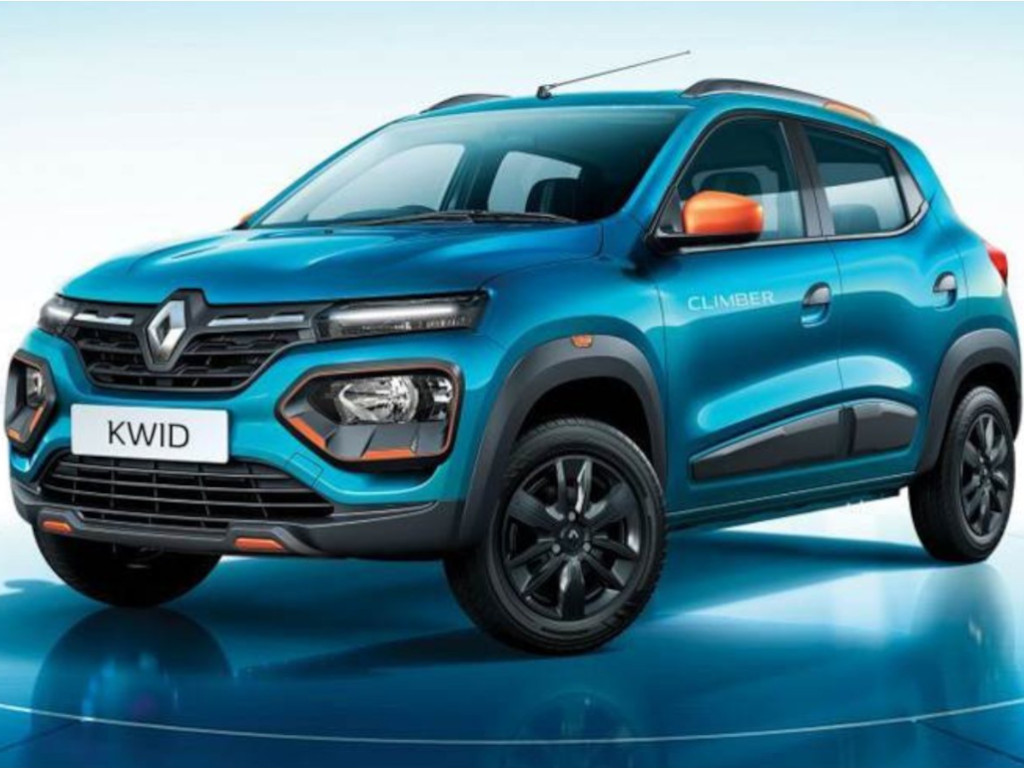
The most significant part of the update comes at the front. Renault is the latest manufacturer to hop on this trend of mounting their headlamps on the bumper of the car. It gets a tubelight-like design for their DRLs, that integrates into the grille of the vehicle. There are no sheet-metal changes, but the front does enough justice in differentiating this car from its predecessor.
The rear end remains largely unchanged, save for a few styling modifications in the rear bumper, and LED additions to the tail lights. While it’s the top-spec Climber version that you see here, the other versions are more subdued and simplistic. Alloy wheels are appreciated, as the S-Presso does not offer them, even in the top-spec variant.
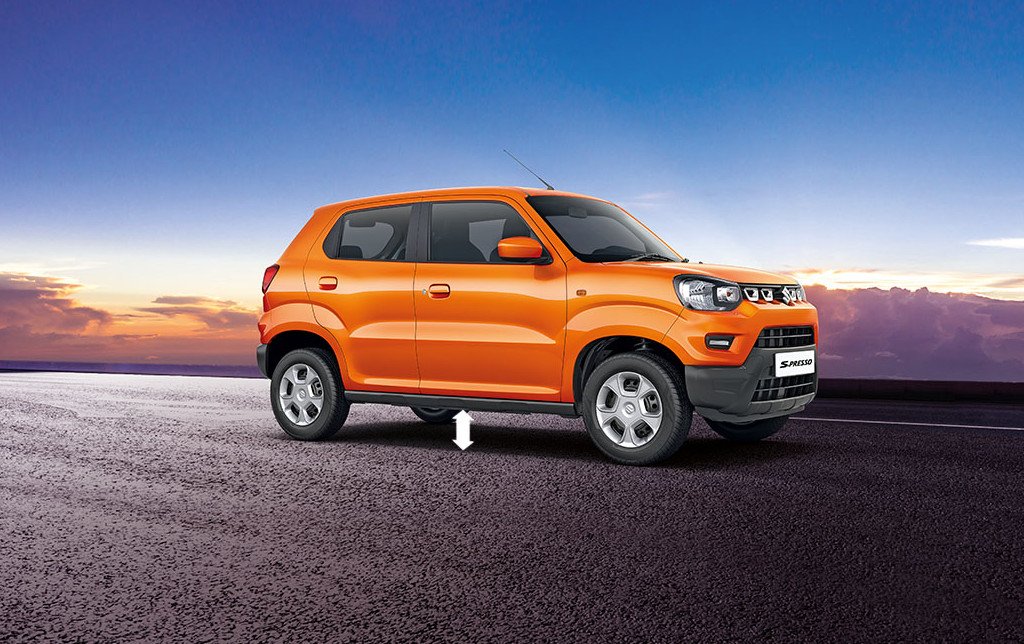
Right off the bat, you can see that Maruti has gone for a boxier design than the Kwid, which is more of a crossover inspiration. The S-Presso here also gets indented, squared-off wheel arches, that promote the ‘SUV-inspiration’ of this car. One standout design choice of this car is the amount of black plastic Maruti has utilised. I think this is to create an impression that this car is taller than what it is, but it does create a dual-tone dynamic.
Since this vehicle does not have a true all-out, top-spec version with alloy wheels and other cosmetic compliments, it does seem like the Renault has the design advantage, but I think that is mainly due to Maruti’s choice of not having the aforementioned trim level. In lower variants, they both look pretty similar.
The Kwid Facelift has a more contemporary design, whereas the Maruti S-Presso has gone for an upright stance. However, customising the look of the S-Presso using the accessory packages will enhance the look of the car for sure.
Interior
Renault Kwid
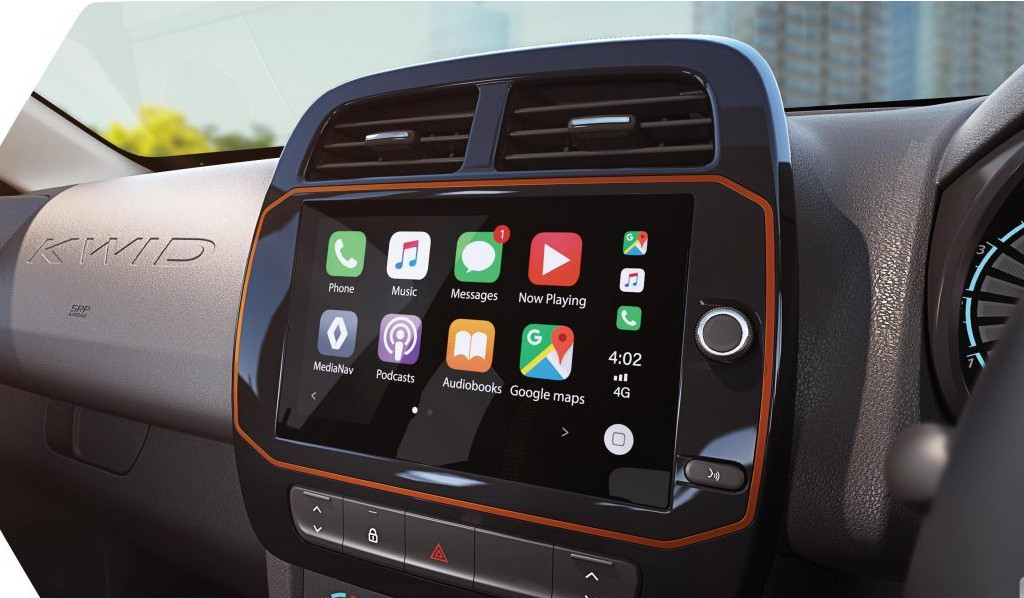
Moving to the cabin (using the old-fashioned door handles in both cars), this is where it seems that Renault has a distinct advantage. While 7-inch touchscreens are the norm in this segment and the higher ones up till the Rs. 10 lakh mark, this car gets an 8-inch touchscreen with Apple CarPlay and Android Auto. Renault has also gone bold with their branding, as the car’s name sits proudly on the passenger airbag cover.
If you can take your eyes off the touchscreen, you will notice the new spec digital instrument cluster that debuted with the Triber. Apart from that, the interior remains largely unchanged, although now the rear seat gets an armrest, a convenient touch on long journeys.
Maruti S-Presso
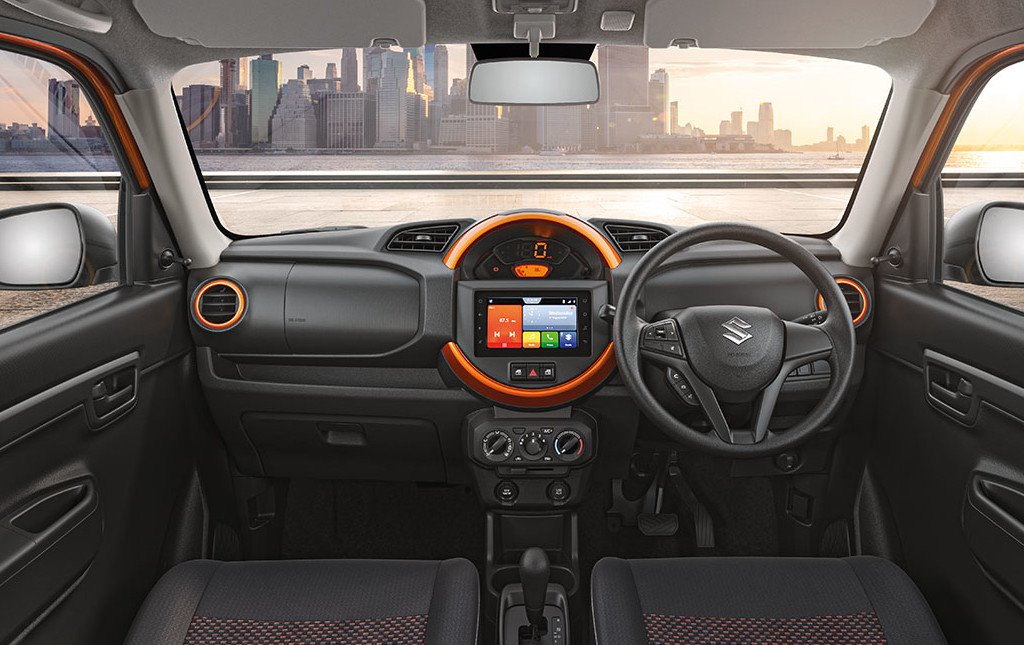
The touchscreen infotainment, with the now customary Android Auto and Apple CarPlay, is the main story here. Maruti has gone for a funky interior design, with body-coloured AC vent surrounds on the higher variants. There is a circular ring that surrounds the touchscreen and the digital speedo. The central AC vents are also made into a design feature, as seen above.
Apart from that, it’s a practical cabin with good space, helped by the boxy stance of this car.
Power And Safety
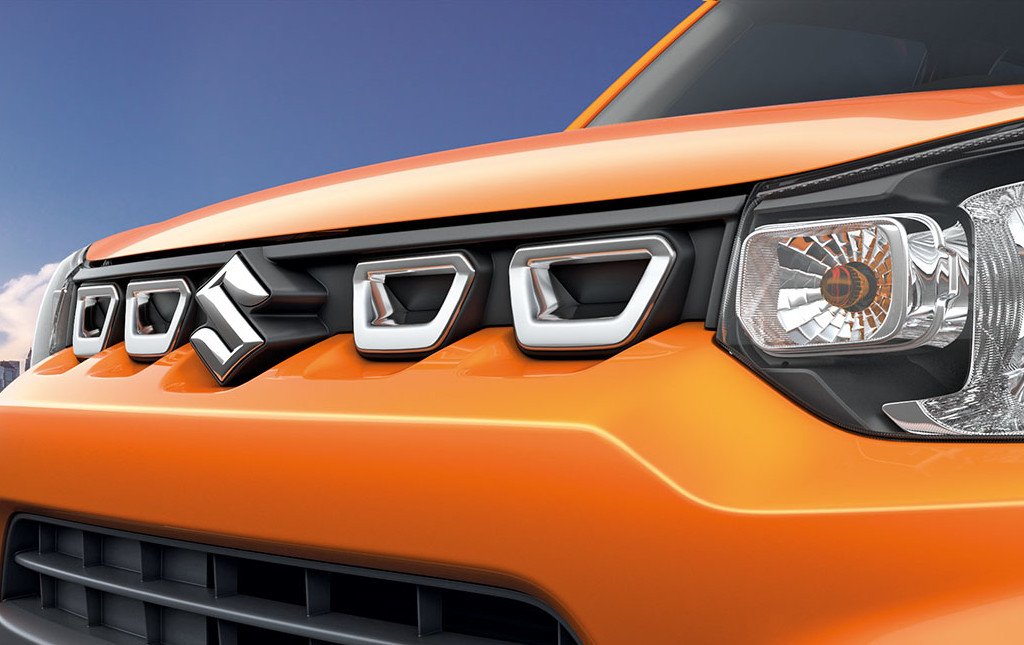
The Maruti S-Presso comes with a 1.0-litre petrol engine giving out about 67 HP, and 90 Nm of torque. There is a 5-speed manual gearbox and an AGS (Auto Gear Shift) on offer. The Kwid, on the other hand, has 2 engines- a 0.8-litre engine giving out 53 HP and 72 Nm of torque and a 1.0-litre engine churning 67 HP and 91 Nm of torque. It’s safe to say they are closely matched on paper.
Coming to the most significant part of any car, safety. Both cars get a driver airbag as standard, and both start offering passenger airbag towards the higher end models. ABS and EBD are standard on both models.
Conclusion
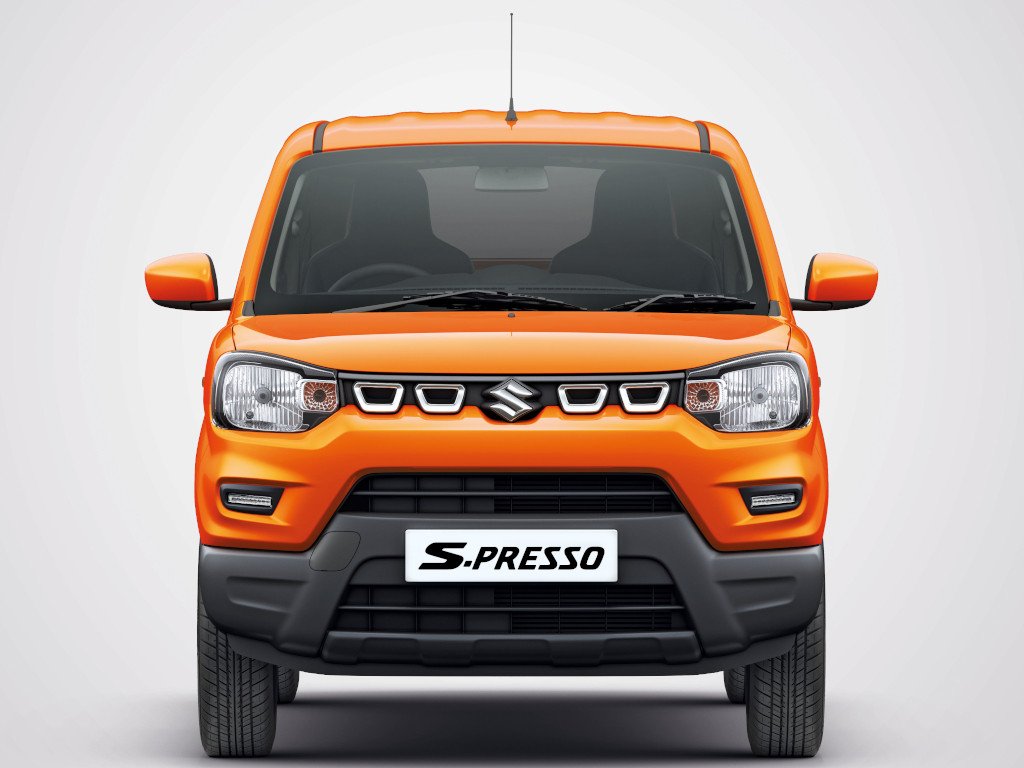
Coming to prices, the Maruti S-Presso and Renault Kwid Facelift are neck and neck here. The Kwid does have a lower starting price of Rs. 2.83 lakhs but that is mainly due to the 0.8-litre option it has. Comparing the 1.0-litre powertrains of both the cars, we see that the Maruti is cheaper starting at Rs. 3.91 lakhs as the Kwid facelift asks Rs. 4.33 lakhs for its base 1.0-litre variant. The automatic variants are priced competitively as well since the Kwid RxT AMT is priced at Rs. 4.63 lakhs and the S-Presso VXi AGS is tagged at Rs. 4.67 lakhs (all prices, ex-showroom).
However, the S-Presso Std misses out on power steering and AC. But as you go higher up the price, the Renault pulls ahead. It has more features and a better cosmetic kit. So spec-wise, the Renault makes more sense higher up the price range. But only the sales numbers at the end of the month will tell us what the buyers think of these two cars.
